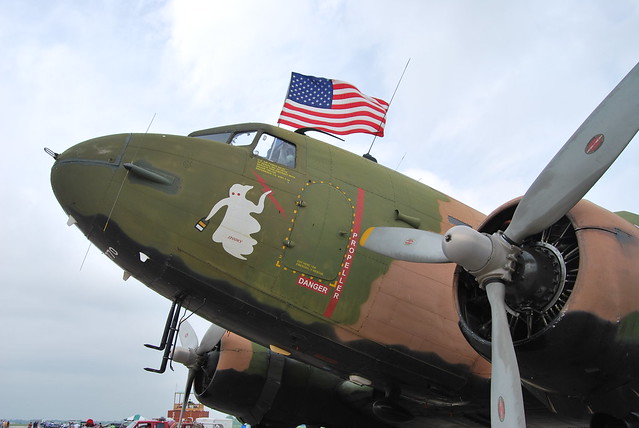For years I have contemplated traveling to Normandy, France to see firsthand the beaches where Allied forces came ashore on D-Day 1944. While that goal persists, I recently came in contact with an icon of that pivotal day.
This much reproduced photograph (now in public domain) by Robert F Sargent, shows US troops debarking from their landing craft at Normandy's Omaha beach on D-Day. The modern film, Saving Private Ryan opens with this same scene re-imagined for the movie.
The vessel type, known as Higgins Boats by their manufacturer, was designated the Landing Craft, Vehicles and Personnel or LCVP, and was operated by the US Navy. Reports of up to 839 Higgins boats were used to carry US troops and materiel during support of D-Day, June 6th.
Higgins Boats were made of wood and designed to operate in shallow water. LCVPs were powered by 225-250 hp engines, operated by a crew of three, and carried up to 36 soldiers or was reconfigured to haul jeeps and supplies. Higgins Boats were protected with two 30 caliber machine guns.
I thought (incorrectly) that LCVPs used at Normandy were constructed of 100% steel for protection of its contents. Not so. Not even close. See for yourself.
My schooling occurred far from 1944 Normandy in land-locked Vincennes, Indiana at the home of the Indiana Military Museum last fall. There, in the museum's expansive warehouse is a rare specimen of a surviving Higgins Boat - one of 12 reportedly left in the world.
This Higgins Boat was purchased or donated to the museum from a source in Florida during 2012. I believe the craft was last actively used as a fishing boat. The museum is seeking to restore the Higgins Boat for public display - donations are accepted.
Here are a selection of photos of AG 9-2 in her original Navy colors. Inspect the draft, beam, and propeller section of this incredible and historic boat.
There is no mention at the museum as to the history of this particular Higgins Boat during the war. More research is needed. Regardless of its use, either in the Atlantic or Pacific theaters of war, Higgins Boats are forever tied to the D-Day landing at Normandy beaches 74 years ago today.
Showing posts with label D-Day. Show all posts
Showing posts with label D-Day. Show all posts
Wednesday, June 6, 2018
D-Day Type Higgins Boat Under Restoration at Indiana Military Museum
Labels:
1944,
Allies,
boat,
D-Day,
France,
Germans,
Germany,
Higgins boat,
invasion,
June 6,
Normandy,
Operation Overload,
Saving Private Ryan,
WWII
Thursday, June 6, 2013
C-47s Supported D-Day
On D-Day 1944, some 24,000 U.S., British, and Canadian airborne assault troops led the first phase of the Allied invasion of France, many of them jumping from C-47s like this one. About 6 hours later a massive amphibious landing involving more than 350,000 additional soldiers, sailors, airmen and marines followed. (Photo taken at the 2011 Quad Cities Airshow. This particular plane was in service through Vietnam.)
Sunday, June 6, 2010
The Longest Day: D-Day Plus 66 Years
Operation Overlord commenced on June 6, 1944 as Allied forces came ashore in Normandy, France, against Hitler’s Fortress Europe. In 2010 debate still exists over the invasion’s casualty figures with no official number or list available. One estimate is that more than 425,000 Allied and German troops were killed, wounded, or went missing during the battle including more than 209,000 Allied casualties. Roughly 200,000 German troops killed or wounded, the Allies also captured 200,000 soldiers. French civilian casualties during the Battle of Normandy are estimated to be between 15,000 and 20,000.
Today the site of one of the fiercest fights of the invasion, Pointe Du Hoc is under attack of a different kind. The bluff itself is suffering from natural erosion and the stress of up to 500,000 visitors a year. Preservation efforts are currently underway to shore up the bluff and save it for generations.
Pointe Du Hoc is a cliff rising west of Normandy’s Omaha beach. American Ranger soldiers under tremendous enemy fire landed on the beach, scaled the cliffs and eventually took out the Nazi howitzers aimed at the landing area.
Subscribe to:
Posts (Atom)








